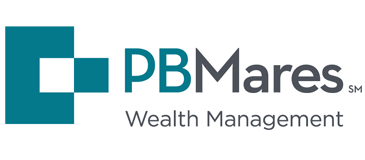Since the SECURE Act passed in December of 2019, several clients have reached out regarding the so-called “10 Year Rule” which stipulates all retirement assets must be distributed to certain beneficiaries within 10 years of the client’s passing. Many clients who have listed their trusts as beneficiaries are concerned about how this rule impacts their estate plan. For example, some trusts are set up to provide a beneficiary with assets based on a yearly Required Minimum Distribution rule which is no longer in effect. If IRA assets must be distributed within 10 years, this may directly contradict the language in your trust document which distributes assets over a much longer time frame.
In order to address this concern, it is important to first understand how the old rules applied.
Before the passing of the SECURE Act, non-designated beneficiaries (certain ‘non-person’s’ such as trusts or charities) which did not qualify as “See-Through Trusts” (more on this in a moment) were required to distribute retirement funds by the end of the 5th year after the owner’s death. If however, the trust qualified as a See-Through Trust, the trust was treated as a single designated beneficiary and was able to ‘stretch’ the distribution using the oldest applicable trust beneficiary’s life expectancy.
A See-Through Trust is a properly drafted document which meets four requirements:
1) It is valid under state law,
2) It is irrevocable (can’t be amended) upon death,
3) Its underlying beneficiaries are identifiable, and
4) A copy of the trust document must be provided to the IRA custodian no later than October 31st of the year following death.
Requirement #3 is subject to a lot of confusion. What if some of your beneficiaries are identifiable and others are not? What if you have beneficiaries who receive income every year and other beneficiaries who will one day receive the principal (or the remainder)? Frequently clients list a charity as the final beneficiary should no living heirs survive. If you list a successor interest as charity, does that render the Trust as a non-See-Through Trust? In order to address this, Treasury Regulations state that if a trust requires the RMD from the IRA to pass directly and immediately to the underlying income beneficiary (which is typically a spouse), that only the income beneficiary’s life expectancy must be considered. This is the Conduit Trust provision. All other remainder beneficiaries’ life expectancies can be ignored for purposes of determining the oldest. Some trusts however draft language in which the trust will continue to hold the RMD as it leaves the IRA and the trustee has the discretion to pass assets to the beneficiary. This is an Accumulation Trust and all beneficiaries are considered for purposes of determining the oldest life expectancy.
The rules for non-designated beneficiaries hasn’t changed. They are still subject to the 5 Year Rule but the SECURE Act did change the rules for designated beneficiaries. They can now be broken into two categories: eligible (those listed below) and non-eligible (those that are not eligible).
Eligible designated beneficiaries are able to ‘stretch’ their distributions (interestingly they may also opt out). They must now be one of the following:
- Surviving Spouse
- Disabled Person
- Chronically ill person
- Individual who is not more than 10 years younger than the decedent
- Minor child of decedent (and this is only applicable until they reach age of majority)
Non-Eligible designated beneficiaries (those not listed above) are subject to the 10 Year Rule.
So back to trusts. Remember, there are two types of see-through trusts which could qualify for the stretch: Conduit and Accumulation. A conduit trust requires distributions to be made each year and paid to the trust beneficiaries. If a conduit trust names an eligible designated beneficiary (see list above) then they will be able to continue to stretch the distributions. But if they haven’t named eligible designated beneficiaries, they could be hit hard with the new rule.
Since Conduit Trusts require all distributions received to be passed outright to beneficiaries, they can’t get stuck inside the trust where they would be taxed at trust income tax rates. Conduits are taxed at the beneficiary’s personal income tax rate but at the expense of a loss of control (because it’s no longer in the trust itself). Accumulation trusts however will result in the assets being held within the trust and subject to trust income tax rates. So if a client is more focused on control then making sure their current document is (or will be) an accumulation trust may be recommended. It would still be paid out in ten years and subject to higher taxes, but control would be the pay-off.
For Conduit Trusts in which there is a single eligible designated beneficiary (typically the spouse), the stretch still exists. A potential problem arises with multiple income beneficiaries all of whom are eligible designated beneficiaries. (For example, you name your sister who is 5 years younger and you name your nieces and nephews all of whom are minors). What age should be used to calculate the RMD? The sister who could stretch (because she is not more than 10 years younger) or the minor children who would force the trust to switch to the 10-year payout at age of majority? It is unclear. Some have suggested creating single income beneficiary trusts and creating as many as you have beneficiaries for. This does require multiple trusts to be created and maintained, however.
So let’s say now that your client has a Conduit Trust with at least one non-eligible designated beneficiary. This will render the stretch obsolete and the 10 year rule will apply.
Lastly, the trust should contain language as to how quickly it allows distributions to be made. The trust language could allow the trustee to take out more than the RMD every year (which would provide for the most flexibility) or it could have been drafted to require the trustee to take out “only the required minimum distribution each year.” This may not be advisable as that would mean that the trustee technically can only now take the distribution on the 10th year (because that is now the only RMD requirement).
As you can see, the question as to whether or not you should name your trust as a beneficiary of your retirement accounts is more nuanced than ever before. Wondering how your estate plan works in today’s environment? Our Wealth Management team can discuss options to help you achieve your financial goals and connect you with local estate attorneys to implement your plan.
Questions? Contact PBMares’ Wealth Management team today.
About the Author:





